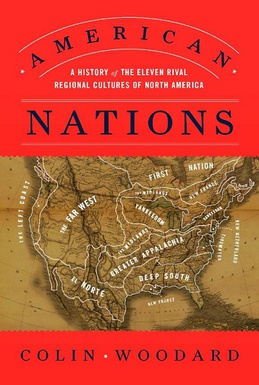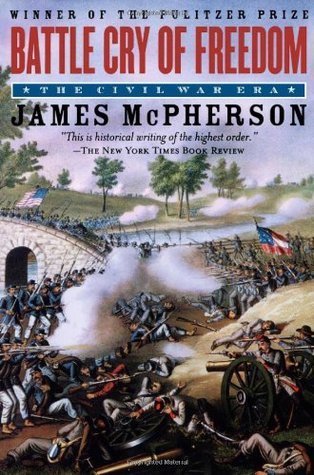Title: The Guarded Gate
Rating: 4 Stars
With Southern governors now sending off immigrants to semi-random areas up North in some kind of attempt to own the libs, immigration is once again in the forefront of our news. I say once again because immigration concerns are nothing new here. A good history of our xenophobia is America for Americans, by Erika Lee (I wrote about it here). The Guarded Gate is about a specific point in American history.
Before I start discussing that time, it’s always good to start with the fact that, for the longest time, there was no American concept of illegal immigration. You got on a boat, you went across the ocean, you disembarked at Ellis Island, and you were in. It was as simple as that.
So, when people today talk about how their ancestors got in the right way, that they ‘followed the rules’, if their ancestors came more than 100 years ago (as mine did), remember that there were no rules, so it’s a bit disingenuous to claim some kind of moral high ground.
Another thing to keep in mind is that racism changes over time. One of the big surprises, if you didn’t already know that, is how the definition of who is white changes over time. If you’re interested in that subject, I’d recommend The History of White People by Nell Irvin Painter (and I wrote about that here).
During the time of this book (1890s through 1920s), people were most concerned with immigrants coming from Southern and Eastern Europe. Nationalities such as Italians, Greeks, Serbs, and Poles were considered dirty and mentally unequipped to become ‘real’ Americans. In fact, they were considered to be a completely different race. At the top of the race heap were the Nordics (renamed from Teutonic due to the unfortunate fact of World War I suddenly making enemies of the German people). Below the Nordic race was the Alpine race, followed much lower by the Mediterranean.
Italians were considered only good for jobs such as food peddler. Even worse, they had a reputation for reproducing so much faster than the ‘good’ race. Many felt that by allowing so many Italians to immigrate, in combination with their increased levels of reproduction, would lead to the destruction of the ‘American’ race. This was called race suicide.
And when I say that many held that opinion, I’m not just talking about low educated, ignorant, overt racists. Teddy Roosevelt believed in and used the term race suicide.
In fact, many of the leaders during this time proposing restricted immigration based upon the ‘science’ of eugenics were prominent in the Progressive movement. Many of them were trained scientists. Those that weren’t scientists came from what passes for American blue blood royalty. These were people whose families could be traced back to the Mayflower or from the most elite, old money, Boston families. They received multiple degrees from Ivy League institutions and lived lives of great luxury.
We have Madison Grant, a leading figure in the eugenic movement. He also founded the Bronx Zoo. Another leading figure was Fairfield Osborn. A paleontologist, he was the person that named the Tyrannosaurus Rex. He was the president of the famed American Museum of Natural History in New York City for 25 years. He also cofounded the American Eugenics Society and firmly believed in the superiority of the Nordic race. John Rockefeller Jr, a great funder of liberal causes, also secretly funded eugenics organizations.
Some names might surprise you. Margaret Sanger is best known today for advocating birth control. She communicated with leaders in eugenics and thought that there was synthesis in the ideas of birth control and eugenics. She worried about the unfit reproducing. One of the slogans of her organization was “To breed a race of thoroughbreds”.
In a way, it makes sense that the Progressives were seduced by eugenics because it certainly had the veneer of science. Field agents went out, interviewed, collected, and collated the information on some half of a million people. Studies were performed that seemingly conclusively proved that the mental health hospitals were predominately populated by recent ethnic immigrants. A massive study was done of the US army that proved that some forty percent of the soldiers had a ‘moron’ IQ (this was during the time when moron, idiot, and imbecile had ‘scientific’ definitions). Reports generated were full of dense columns of numbers and charts.
Nowhere in all this data was there explicit racism. The conclusions that followed from all of this data collection was based upon rigorous calculations. After all, numbers don’t lie, do they? If there is scientific evidence that immigrants from some countries are indeed defective, isn’t in our country’s best interest to keep them out?
Well, it turns out, numbers do lie if they are derived from nonsense. The people conducting the field interviews were little trained and made incredible subjective judgments. When evaluating those in mental institutions, only public institutions were investigated. Private institutions (where upper class patients would reside) were ignored.
The intelligence tests were worst of all. Here are some sample questions (and no, I’m not making this up):
- The Wyandotte is a kind of: horse, fowl, cattle, or granite.
- Bud Fisher is famous as an: actor, author, baseball player, or comic artist
- Velvet Joe appears in advertisements of: tooth powder, dry goods, tobacco, or soup
Guess what? Apparently I’m an imbecile! Clearly, this is not an IQ test. At best, it’s a test of cultural knowledge. Imagine giving this test to a recent immigrant from Italy and then being shocked that they register as mentally impaired. Even so, these tests did yield some darkly amusing results. It goes without saying that, in the race hierarchy, that the Black race was considered the lowest rung. Imagine the surprise when Black people in the North scored higher than white people in Mississippi, Arkansas, and Kentucky.
Regardless, this seemingly scientific approach was enough to lead to the passage of laws that severely restricted immigration. Wanting to be racist without seeming to be racist, the law set an immigration quota for each nation. This quota was based upon the relative percentage of each nation already in the US. Seemingly fair until you learn that the law was passed in the 1924. The 1920 census data was available and ready to be used. Instead the law was based upon the 1890 census. You will not be shocked to learn that 1890 was before the bulk of the Southern and Eastern Europeans began to immigrate.
Therefore, the immigration quota of these nations were dramatically restricted without the messy racism of having to call them out by name. Immigration from these nations immediately dropped by ninety percent or more. Quotas were based on monthly values. The entire continent of Africa was allotted 122 per month (oh yes, Black Americans, descendants of slaves from Africa, were intentionally excluded when calculating the quotas). One person from Luxembourg was denied because that country’s monthly allotment of seven had been reached.
Ships from some countries would sit outside ports and then, when the new month starts, would race each other to be first. For example, Greece was allocated a couple of hundred people a month. One ship beat another by two minutes. The second ship was turned away.
This is madness. And yet, the madness persisted for forty years. It wasn’t until the Immigration Act of 1965 that national quotas strongly preferencing Western Europe were removed. As a science, eugenics in the US wasn’t discredited until the rise of Hitler and Nazism.
And here we are again. There’s now another ‘throng’ of immigrants trying to reach our country. There are so many of them (apparently traveling in ‘caravans’). They speak a different language than us. They’re bringing their own unique culture. They congregate together in communities. They don’t appear to be assimilating.
Some people that consider themselves Real Americans are worried that these immigrants are threats to our culture. People are worried that they’re going to take over. People are worried that our way of life (whatever that means) is somehow at risk. After all, these are people coming from ‘shithole’ countries. That can’t be good, right?
It’ll be interesting to see what historians thirty years from now will write about us. I’m guessing that it won’t be kind.







